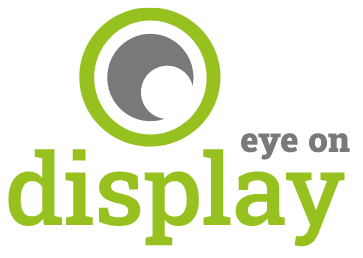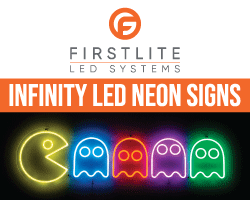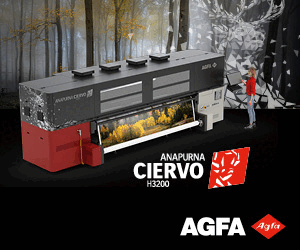By Megan Woodcock, Managing Director of Firstlite LED Systems
LEDs have become indispensable in modern sign-making, revolutionising how businesses communicate their messages. This dynamic, versatile, sustainable and cost-effective technology enables the creation of impactful LED signage, both outdoors and indoors, across a range of industries.

The versatility of LED signage is evident in its ability to cater to various environments and applications. Outdoor LED signs, engineered to withstand outdoor elements, enable outdoor advertising, public announcements, and event promotions. These signs are bright enough to combat glare, ensuring visibility and readability on the sunniest of days. Whether towering along a highway or captivating visitors at a sports stadium, outdoor LED signage helps deliver impactful messaging that captures audiences’ attention.
Indoor LED signs offer specific features to support indoor environments such as offices, retail stores, entertainment venues, and corporate lobbies. These signs prioritise factors like resolution and colour accuracy to enhance brand identity and create immersive environments that leave lasting impressions on customers and visitors.
The differences between indoor and outdoor LED signs reflect businesses’ diverse needs and preferences. Outdoor signs need rugged construction, weatherproof features, and high brightness levels to ensure durability, visibility, and impact in outdoor settings. Indoor signs focus on factors like colour accuracy and image clarity, catering to close-range viewing.

Modern LED signage solutions integrate energy-efficient LEDs, dynamic content capabilities, remote monitoring, and customisable design options. When selecting LED signage solutions, Firstlite works closely with businesses to ensure optimal performance and return on investment. Essential factors to consider in this decision-making process include:
- Brightness Levels: Outdoor LED displays require higher brightness levels to combat ambient light and ensure visibility in daylight conditions. Indoor displays may have lower brightness levels but prioritise colour accuracy and image clarity for close-range viewing.
- Weather Resistance: Outdoor LED displays should be weatherproof, with features like IP65-rated enclosures, anti-glare coatings, and temperature management systems to withstand harsh outdoor conditions.
- Integration and Installation: LED signage solutions should integrate seamlessly with existing infrastructure and architectural elements, with considerations for mounting options, cabling, and power requirements.
In addition to technical considerations, LED signage offers a range of benefits for businesses:
Brand Visibility and Recognition: LED signs enhance brand visibility, attract attention, and reinforce brand identity through dynamic and engaging content.
Information Dissemination: LED signage is an effective tool for delivering real-time information, announcements, promotions, and wayfinding guidance in various settings.
Audience Engagement: Interactive LED signs engage audiences, encourage interaction, and provide personalised experiences.
Energy Efficiency: LED technology offers energy-efficient lighting solutions, reducing power consumption and operating costs while minimising environmental impact.
Versatility and Flexibility: LED signage can be customised, scaled, and adapted to various applications, environments, and communication objectives, offering businesses versatility and flexibility.
As the demand for visually compelling and interactive communication solutions grows, LED signage offers many opportunities for innovative marketing, advertising, and communication strategies.
See more about Sign Illumination on Eye on Display.

















